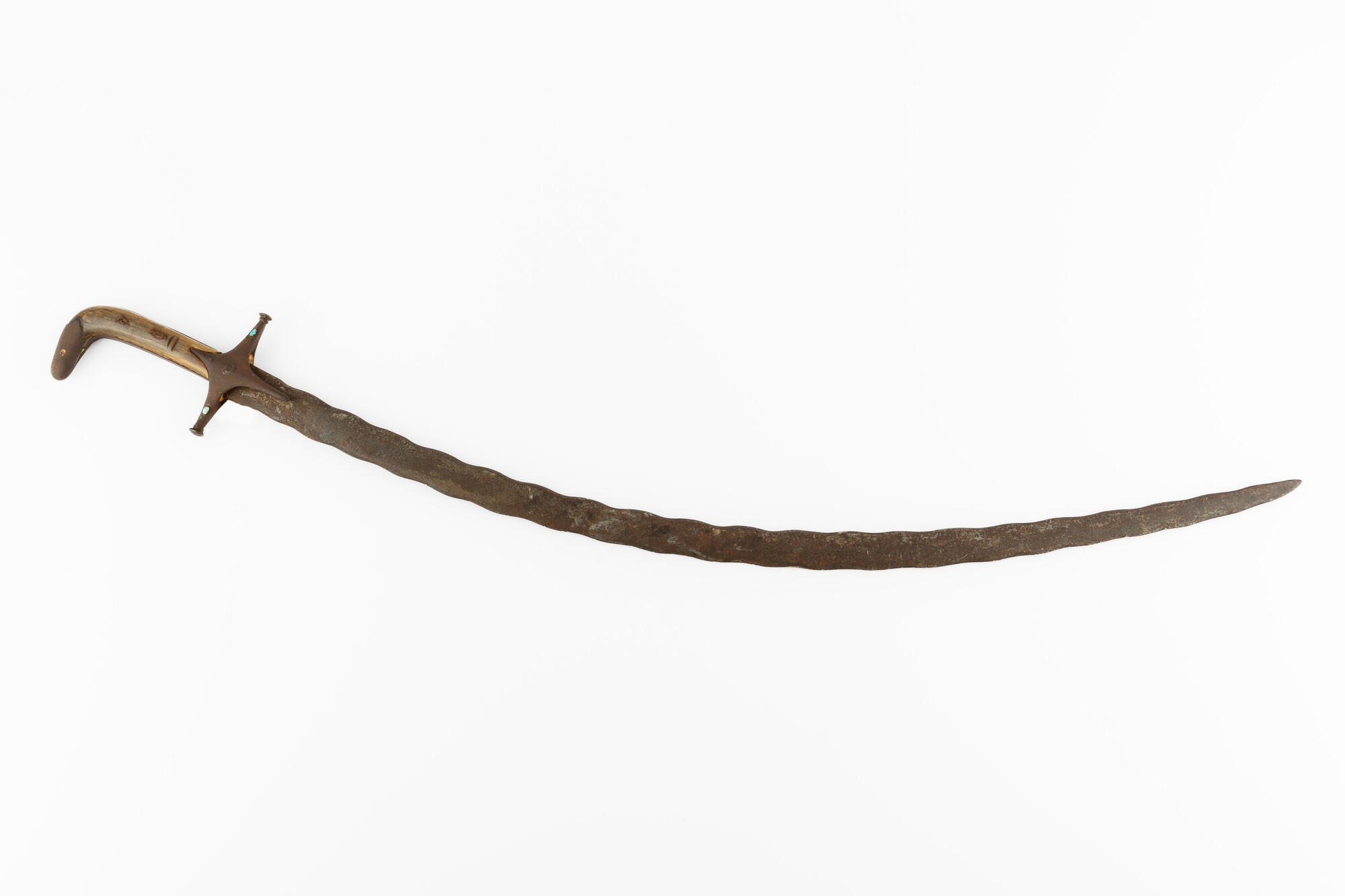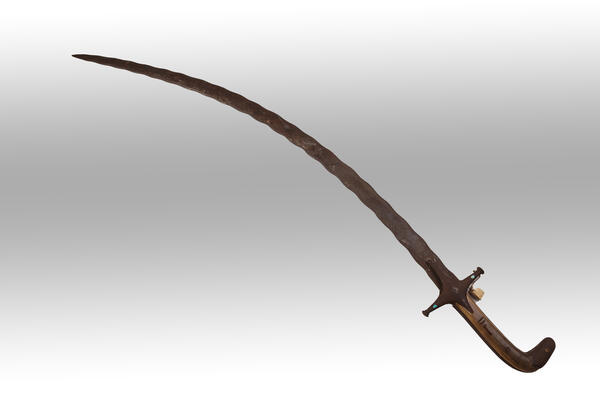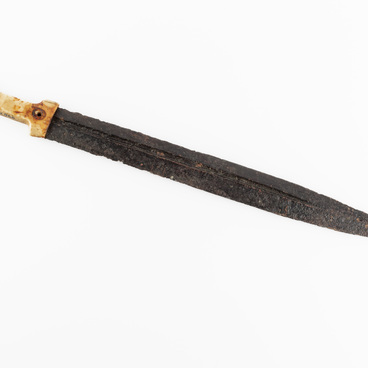A saber is a type of edged weapon that permits cutting and stabbing. This lightweight weapon, convenient for quick strikes, was widely used in the Caucasus. The most important difference between a saber and a sword is the location of the center of gravity. In a saber, the center of gravity is at a considerable distance from the handle, therefore, it can be used to cut. The blade of the saber is more curved. The curved blade increases not only the force of impact, but also the area of damage. The hilt of the sabers is to be held with one hand only, and the blade has a single cutting edge. Sabers were used both for attack and defense.
A saber consists of a hilt, a blade, a grip, a pommel, a cross guard, a langet (served to securely fix the saber in the scabbard), a spine (the back blunt side of the blade, although there were also sabers with double cutting edge), an edge, a false edge (expansion in the lower third of the blade, as a rule, it had an edge and was typical only for some sabers), and a point.
Sabers were usually carried in wooden scabbards. To avoid cutting the scabbards, the locket and the chape were bound with metal. Metal rings were attached in the middle and used to hang the scabbard from the belt.
In Russia, the saber has been known since the 9th century, and since the 14th century it has become the prevalent type of edged weapons. In the 15th–17th centuries, the Russian cavalry, archers, and Cossacks were armed with diverse types of sabers.
In the Circassian culture, weapons were of particular importance and were highly valued. In their tradition, it was customary to decorate them richly and take care of the weapons. The weapon was not only used in battle — it also emphasized the status of its owner in peacetime.
The saber on display in the Gelendzhik Museum is a wave-shaped, or flame-shaped, sword. Wounds incurred by “flame” blades healed much worse than from straight ones. The handle is made of two pieces of horn with an overlaid head bound with iron in the form of a snake’s head. The crosspiece is straight, with a crossguard, decorated with two large turquoise stones and green glass imitating emerald. The blade of the saber has traces of silvering.
A saber consists of a hilt, a blade, a grip, a pommel, a cross guard, a langet (served to securely fix the saber in the scabbard), a spine (the back blunt side of the blade, although there were also sabers with double cutting edge), an edge, a false edge (expansion in the lower third of the blade, as a rule, it had an edge and was typical only for some sabers), and a point.
Sabers were usually carried in wooden scabbards. To avoid cutting the scabbards, the locket and the chape were bound with metal. Metal rings were attached in the middle and used to hang the scabbard from the belt.
In Russia, the saber has been known since the 9th century, and since the 14th century it has become the prevalent type of edged weapons. In the 15th–17th centuries, the Russian cavalry, archers, and Cossacks were armed with diverse types of sabers.
In the Circassian culture, weapons were of particular importance and were highly valued. In their tradition, it was customary to decorate them richly and take care of the weapons. The weapon was not only used in battle — it also emphasized the status of its owner in peacetime.
The saber on display in the Gelendzhik Museum is a wave-shaped, or flame-shaped, sword. Wounds incurred by “flame” blades healed much worse than from straight ones. The handle is made of two pieces of horn with an overlaid head bound with iron in the form of a snake’s head. The crosspiece is straight, with a crossguard, decorated with two large turquoise stones and green glass imitating emerald. The blade of the saber has traces of silvering.




